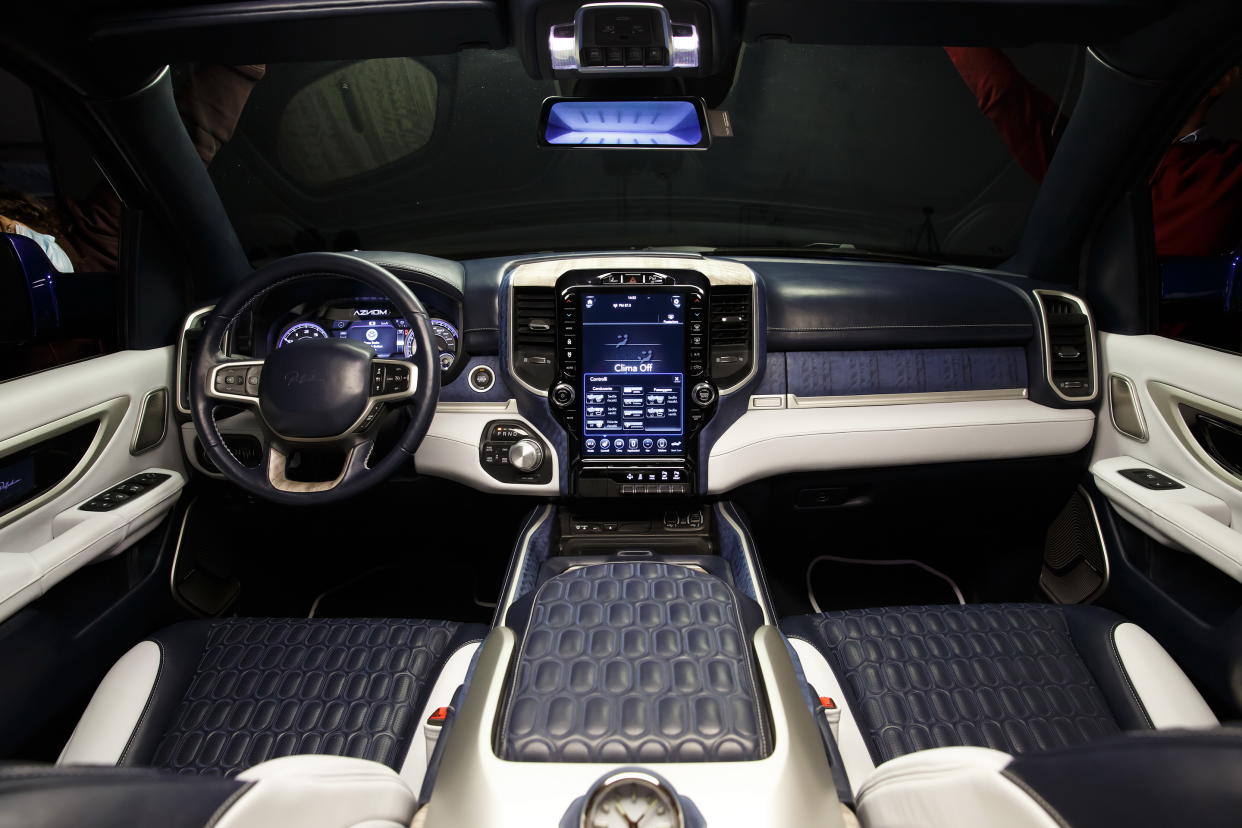The Aznom Palladium is a pickup truck-based limousine from Italy

It’s fair to say the car industry has become quite predictable, with manufacturers rolling out SUVs of various shapes and sizes, usually looking similar to one another and often based on the same platforms.
However, every once in a while something genuinely surprising comes along. And today, that surprise is the Aznom Palladium, a luxury limousine based on a pickup truck.
Based in Monza, Aznom has been providing luxury interior conversions for a variety of vehicles, but the company founder Marcello Meregalli wanted a luxury car that could cope with slippery ski slopes or visiting remote vineyards.

In 2018, the company built the Atulux. On the outside it looked very much like the Ram truck it was based on, but inside it was much more luxurious than its donor car. Now, the firm has revealed the Palladium, the natural evolution of that vehicle.
Underneath, it’s still based on a Ram pickup, but the exterior has a more unique look that’s less like a truck. Power comes from a tuned version of Ram’s 5.7-litre twin-turbo V8 engine, which makes 700bhp and 950Nm of torque. Customers can request a mild-hybrid powertrain, too.
It uses the truck’s four-wheel-drive system, which can be controlled through drive modes in the cabin. When it starts, the Palladium is in rear-wheel-drive mode for road driving, but can be switched to power all four wheels as well as giving the driver the ability to unlock and lock the differential manually.
Inside, it’s as luxurious as you’d expect. There’s a large rear seat, which Aznom calls a throne, while almost every surface is covered in leather – including the ceiling. A touch-sensitive control panel in the driver’s door gives full control of the lighting, air conditioning, on-board refrigerator and more.
There’s also a Harman Kardon sound system and two Microsoft Surface X Pro devices for passengers.
Meregalli said: “We have produced this vehicle choosing artisanal manufacturing techniques that are almost lost today, such as panel beating and hand-crafting the body of the car, together with other technological solutions.
“Engine builders, tanners, panel beaters, designers and engineers who have worked on this project are heirs to a tradition that has made Italian cars famous all around the world.”


